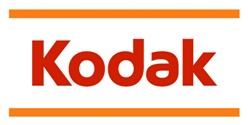Anatellô
Monthly Archive
Kodak : Would Innovation Performance Measures Have Helped?

As Kodak files for Chapter 11 Protection so that it can avoid bankruptcy while it restructures, the accusations fly.
“Too slow to change!”
Of course they were. Kodak is a company, companies are made up of people… and most people don’t like change – especially far-reaching change.
Kodak won’t be the last big company to suffer dramatic loss of market share or even bankruptcy through disruptive innovations - successfully brought to market by competitors.
(Yes, one of the ironies of this story, is that it was Kodak that developed the digital camera in 1975.)
Another of the ironies, is that the introduction of the digital camera has long been talked about among people interested in innovation, as a cracking example of a disruptive innovation. Exactly the thing that many CEO’s, R&D Directors, Marketing Directors dream about creating and delivering!
So, is there anything new to be said about Kodak?
As we know, when a company needs to change dramatically and rapidly it is particularly difficult.
Resources For Innovation.
To bring the newly developed digital camera to market Kodak would have had to allocate resources to a risky project based, on a new technology and have introduced a new business model.
The opportunity cost of doing this would be the reduced amount of resources for their established film business. This was a market where they were dominant leaders and earned 70% margin.
Sustaining the current business is so much easier than launching a new one...
This is of course an example of the Innovator’s Dilemma – as espoused by Clayton Chistensen in 1997.
Does the Kodak story provide any further insight as to how to overcome the dilemma?
A couple of suggestions:-
- With regard to allocating resources, avoid having managers pitching for development and launch budgets for new products going head to head with their colleagues pitching for budgets for established product portfolios.
In most cases those looking for launch funding will lose out on the risk/return criteria.
- Whether an organization likes it or not, in order to survive, it has to move forward into the unknown. It has to engage with/bring to market/ take a chance on new technologies.
It can either choose to do this early or it can come under enormous pressure to do so later.
Innovation Performance Measures.
One way of organising the whole business around 'openness to new technologies', is by setting some relevant Innovation Performance Measures each year.
The most obvious one might be “to achieve a certain percentage of revenue from ‘new products’ – e.g. products launched in the last X number of years”. This might be three or five years unless the product development time is particularly long.
The innovation performance measures can be expanded to include things like:-
- Innovation rate – the number of ‘new products’ compared to the total number of products in the portfolio.
- Number of new products - compared to competitors.
- Market share growth - due to new products.
Many companies have used Innovation performance measures to keep their focus on the horizon. In some cases, it has probably helped them to drag themselves ever so reluctantly into that unknown, risky, uncomfortable place called the future which, regardless of how unattractive it looks… will happen.
© AnatellÔ Ltd 2012. All rights reserved.



